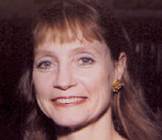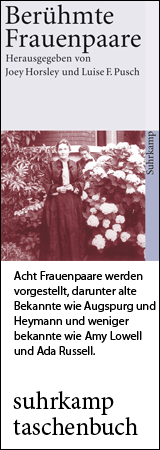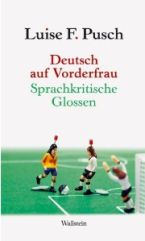
born on August 16, 1945, in Cincinnati, Ohio, United States
American dancer, dance teacher, and choreographer
80th birthday on August 16, 2025
Biography
The dance critic of the New Yorker, Joan Acocella, described the 45-year-old amateur video as “one of the most extraordinary pieces of dance footage I have ever seen.” It shows a young woman “... dancing with fluid grace combined with furious, almost demonic, energy. The intricate steps, executed at breakneck speed, make one wonder how an ordinary mortal could actually move that way. “(Gewertz 2004)
Suzanne Farrell, only 19 years old when the video was made, is – in Acocella’s words – ”the most influential dancer America has ever produced.”
After divorcing her husband in 1959, Farrell's mother moved with her talented daughters from Cincinnati to New York to enable them to train as a pianist and dancer. The three lived in a tiny apartment that was almost completely taken up by the grand piano. At night, the daughters slept in the only bed, and during the day, their mother slept there. At 15, Farrell received a scholarship to the New York City Ballet (NYCB) school, which was run by Russian émigré George Balanchine, whom Farrell regarded as “the genius of the century of ballet.”
At 16, Farrell joined the NYCB, and she was only 17 when Balanchine first began casting her in leading roles. “Throughout his career, Balanchine's working method was as follows: he fell in love with a young dancer, created wonderful ballets for her, sometimes even married her, and then moved on to the next young dancer.” (Acocella) Farrell decided to neither marry nor sleep with “Mr. B,” who was 41 years her senior. They had a platonic and therefore perhaps all the more intense relationship. In the 1960s, the so-called “Farrell years” of the NYCB, Farrell was given almost every leading role, and Balanchine created a new ballet for her every year, sometimes even three or four. When she married her colleague Paul Mejia, Mr. B became so obnoxious that she moved to Brussels for four years to work with Maurice Béjart. They then reconciled, and from 1975 until Balanchine's death in 1983, the two were once again the dream team of American ballet.
Farrell retired from the stage at the end of 1989 and has since been in demand worldwide as an expert on Balanchine's choreography. She set up her own Suzanne Farrell Ballet Company at the Kennedy Center in Washington, DC in 1995. Once obsessed with performing and hated by colleagues at the NYCB for her aloofness and privileged position, Farrell has become a gifted teacher. She chooses the dancers for a specific performance, assembling them into a troupe that she then guides expertly to unexpected heights much like Balanchine had. Unlike Balanchine, she does it all without sleeping with any of them.
(Text from 2004; translated with DeepL.com; edited by Ramona Fararo, 2025. Please consult the German version for additional information, pictures, sources, videos, and bibliography.)
Author: Luise F. Pusch
Quotes
(from Academy of Achievement):
But what was my motivation was music, and the fact that I love to move around. I'm always moving around. And I think it was important that I learned to love to dance eventually for its own sake, as opposed to wanting to be a ballerina. Because I think it made me realize that there was a lot of hard work involved before you get to be a ballerina. And I never lost loving the actual work that was involved in it.
Let's get back to your beginnings. What were you like as a kid?
Very adventurous. Fearless, which I guess was good, ultimately, in having to get out on stage.
I had a wonderful childhood, coming from Cincinnati, and I think that it was great going into the life that I was going to have, where you have to start young as a dancer. You don't have the opportunity to really lead a normal life, like most young teenagers do. I was very happy that I was as normal as possible before I went into serious dance.
I was grateful that I had dancing to fall back on. It was my survival tactic. It was my friend. It was always there. I could work out a lot of my emotions by going to class and dancing. I never felt lonely.
I liked math. Counting was easy for me, which was good, because a lot of the ballets have involved difficult counts. I liked spelling. I liked anything that has a big problem to solve. History was not too interesting to me. I liked to read but, being a dancer, I didn't have a lot of time to read.
I was very tall as a young girl, and there were no boys in the ballet school. So whenever the recital would come along, I was always the prince, never the princess. I think that's one reason why I wasn't too crazy about ballet in the beginning. I never got those pretty tutus. But of course all that changed.
it wasn't important whether I became famous, I just wanted to be the best that I could be. So you are always in competition with yourself, and not someone else.
Who has most influenced you in your career? Who has had the greatest impact on you?
That's an easy question. It was, of course, George Balanchine. He came from Russia via Europe and settled in America in 1933. He started a little company which was not very successful, so he had to start over and over again. Ultimately, he founded the New York City Ballet. I happened to be born at the right time, came to the right place, and had the fortune to audition for him, and work with him, because he is the genius of the century of ballet. I learned how to dance with him.
———————-
You have to be your own cheerleader, you have to generate your own motivation.
Hold your head up high. Height is an illusion. It doesn't matter how tall you are.
There are no courses that teach you how to be an ex-ballerina. The hardest thing about retiring was that after I stopped dancing, I couldn't listen to beautiful music anymore because it made me want to dance.
From: Gewertz, Ken. 2004. “The grace and wisdom of Suzanne Farrell,” The Harvard Gazette 4/22/04
If you hold the rights to one or more of the images on this page and object to its/their appearance here, please contact Fembio.



